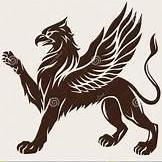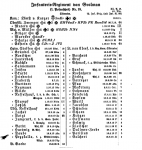-
Posts
638 -
Joined
-
Last visited
Content Type
Profiles
Forums
Blogs
Gallery
Events
Store
Everything posted by ostprussenmann_new
-
Further details on Generalmajor Kundt: Lieutenant: 21 Sep 1889 Oberstleutnant: 19 Aug 1914 Ff Oberst: 18 Apr 1917 P Chief of Staff X. Reserve-Korps: 30 Jun 1915-29 Nov 1915 Commander Kaiser Alexander-Garde-Grenadier-Regiment Nr. 1: 2 Jan 1917-3 Jan 1918. Commander 211. Infanterie-Brigade: 3 Jan 1918-8 Sep 1918 Commander Kaiser Alexander-Garde-Grenadier-Regiment Nr. 1: 20 Jan 1919 *Retired as a Generalmajor a.D.
-
In fact during the Chaco War Bolivia counted with the following German advisors or volunteers: Gen. Hans Kundt (Commander) Maj. Wilhelm 'Wim' Brandt (tanks and infantry) Maj. Achim R. von Kries (tanks) Maj. Luis Ernst (pilot LAB Junkers 52 transports) *Cpt. Werner Junck (pilot LAB Junkers 52 transports)[1] Cpt. Walter Jästram (pilot LAB Junkers 52 transports) Cpt. Hermann Schroth (pilot LAB Junkers 52 transports) Mr. Kastener (aircraft mechanic LAB) Karl Heming (Intelligence) Wálter Mass (Intelligence) Otto Berg (Intelligence) Karl Ackerman (Intelligence) In the past (before 1931) Bolivia also had the following German advisors: Col. Klaus (War academy, retired before the war) Maj. Friedich Muther (Military academy, retired before the war) *Cpt. Ernst Rohm (NCO academy, retired before the war)[2] Three other NCOs whose names are not recorded [1] A German World War II Luftwaffe Generalleutnant and the one time commander of Fliegerführer Irak. He claimed five aerial victories during World War I. He was also awarded the Iron Cross 2nd and 1st Class as well on 9 June 1944 as Generalmajor and commanding general of the II. Jagdkorps. http://en.wikipedia....ki/Werner_Junck [2] Throughout the period of Hitler's rise to power, Ernst Röhm represented the militant wing of the Nazi Party as the chief organizer of the party militia known as the S.A. (Sturmabteilung) or the Brownshirts.
-
Works Cited Bracco, Jeffrey. Fire Support for Irregular Warfare. Thesis: Naval Postgraduate School. March 2008. Corum, James S. “The Chaco War, 1932-1935.” The Quarterly Journal of Military History. Summer 2009: 52-65. De La Pedraja, Rene’. Wars of Latin America, 1899-1941. North Carolina and London: McFarland & Company, Inc., 2006. English, Adrian J. The Green Hell: A Concise History of the Chaco War Between Bolivia and Paraguay 1932-35. Spellmount Military Studies, 2007. Farcau, Bruce W. The Chaco War: Bolivia and Paraguay, 1932-1935. Praeger: Greenwood Publishing Group, Inc., 1996. Hughes, Matthew. “Logistics and Chaco War: Bolivia versus Paraguay.” The Journal of Military History. April 2005: 411-437. Brunel University Research Archive. http://muse.jhu.edu/journals/journal_of_military_history/v069/69/2hughes.html, Internet, assessed on 10 March 2010. Johnson, Robert C. “The Gran Chaco War: Fighting for Mirages in the Foothills of the Andes.” http://worldatwar.net/chandelle/v1/v1n3/chaco.html, Internet, assessed on 15 March 2010. Zook, David H., Jr. The Conduct of the Chaco War. Bookman Associates, 1960.
-
All interested: A while back I wrote a Battle Analysis for of the Chaco War. Has anybody every heard of it? One could call the Chaco War a training ground for wars to come, specifically the Germans who would use the lessons learned to fight during World War II. The Chaco War was one of the first times Maneuver would be integrated. The Bolivia Army, led by General Hans Kundt, a famous German Regimental Commander, would try to use the tactics of World War One against a Guerilla Force (Paraguay) and ultimately loose even though Kundt's Army had more money and technology. This topic could really bring alot of us,; as collectors and historians from the Imperial German, Third Reich, US, and Britain to discuss our interests and have an intelligent conversation as a community of military history. Below is the introduction paragraph from my 19 page paper that was written. All sources that I used are correctly annotated.. Latin America has had a tradition of internal conflicts since their independence from Colonial powers. Border conflicts pursued and these small countries fought to define themselves. Two countries fought a little war in an area that seemed of little significance to the greater of things going on in the world, which was greatly unnoticed. Little did the great nations of the United States and Europe realize that the war between Bolivia and Paraguay would play such a significant role in what was to become another Great War starting in 1939. The Chaco War would was South America’s bloodiest conflict in the 20th Century with casualty rates equivalent to that of the First World War (Hughes, 1). This conflict could be called a “training ground” for wars to come. Hughes states: Both sides fielded armies totaling 400,000 men. Bolivia would end up loosing two percent of its population (56,000-65,000) dead, and Paraguay would loose almost four percent of its population (36,000) dead. It saw the mobilization of war economies, the use of French and German advisory teams, large scale battlefield engagements, the development of war-time alliances, and the development of the sorts of modern weaponry that would become commonplace in the Second World War. The Chaco War (1932-1935) would be fought during the important Interwar Period that featured changes in technological and doctrine of how war would be fought in the future.
-
This is definitely correct from Glenn. If people are still interested in this topic, I may be able to shed some light. My great grandfather was in both 1st and 2nd Battalions of RIR 109, and he wore litzen on his collar. Originally he came from 33rd Fusilier Regiment "Graf Roon" (East Prussian) (Füsilier-Regiment Graf Roon (Ostpreuß.) Nr. 33) from 1910-1912 and then was transferred to RIR 109. RIR 109 had some pretty sharp uniforms in their Regiment. By 1918 the regiment was listed as a First Rate Regiment. There is also another posting in the GMIC forums that showed a RIR or LG 109 Feldwebel LT with glasses that someone was asking about. I believe that I know who that it. If someone could point me in the right direction i will add the posting. In my Regiment History, there lists a Fwbl. LT who was a commander of some sort. Plus in many of the Officer photos in the book, he is there with wearing his glasses. any Help on what forum this is? Jason
-
The Southern German look on the ribbon bars is real sharp. I actually just read online today about the Southern German Style: "The South German style was so popular it was all but universal in baden, Hohenzollern, Wurttemberg, and Bavaria." ~ http://www.wehrmacht-awards.com/related/ribbons/weimar.htm Jason
-
So after reading some more of the book, I am going to say that murde means "appointed as". So in my previous post I think that Lt. Unruch was made the Adjutant of Second Battalion on 25 June 1917. As for a new posting in my book, on pg 130: it talks about 2-9 July 1916 that Lt d. R Unruh was serving as the Company Commander of 4th Company, I. Battalion. on the rEgimental Officer list. At the end, the book also states that "for a while" Lt. d. R Unruh was appointed Fuhrer of both 2 and 4 Companies when the Companies were united because of losses I am assuming. Thanks for your attention, Jason
-
Hardy, I found his name on pg 204,Das Reserve Infanterie Regiment Nr 109 im Weltkrieg 1914 bis 1918 . Please read my reply. Based off of the thread, I would say we found the guy. I was pretty excited to get a post, so I started looking tonight. Tommorrow I will continue to look for more updates. I have an update as of right now on the LT Robert Ochel grouping that I just bought, from this thread: pg 276 of RIR Regimental history, states that by August 1918, LT Ochel, was appointed a Company Commander (Kompaniefuhrer), in III. Battalion in the Nachrichtenkomp (NEWS COMPANY/PROPAGANDA). He was also promoted by now to OBlt. or Oberlutenant (US equivilant--1st LT). I will continue to look for more information on him if anyone is interested in me posting it. Thanks Jason
-
Ok, from a quick look in my regimental history of RIR 109, on pg 204, there is this following statement as a direct quote,"Lt. d. R Unruh murde am 25. Juni zum Adjutanten des II. Batls ernannt, und Lt. d. R Kalper ubernahm die 4. Kompanie." No first initials though. My best interpretation is "that he was appointed as Adjutant of Second Battalion on 25 June 1917" or he was killed (german word murde) on the same date. In the back of the book shows all Soldiers and Officers killed in the entire regiment and I did not see his name. So honestly I would go with the first choice. Maybe someone can have a better translation than me. My German is very basic. Most years in the book list all of the officers either at the beginning or end of that particular year and I have not seen him yet, but remeber guys I just did a quick look. I hope this helps.
-
ALCON This is funny that this was talked about a few months ago. I have just aquired this group myself from Ken G in Florida, USA. So now I am wondering how hands has this grouping gone through recently? I am sure down the road somebody has sold the EK1 and other medals of the ribbon bar separately. I also have this book: Das Reserve Infanterie Regiment Nr 109 im Weltkrieg 1914 bis 1918. Funny thing, this guy was in my Great Grandfather's Regiment, RIR 109. I am a major collector of this regiment and its parent unit. If anyone has any additional information or where this information came from on this guy, it would be much appreciated. Also, does anyone know who originally owned this grouping and how it was aquired. Also, if anyone comes accross anything from the following, I am willing to buy: 1) Infanterie-Regiment von Grolmann (1. Posensches) Nr. 18 [GREAT UNCLE SERVED IN THIS REGIMENT AND DIED IN 1917] 2) Badisches Reserve-Infanterie-Regiment Nr. 109 [GREAT GRANDFATHER, IMMIGRATED TO THE US IN 1923]. 3) 109th Baden Life Grenadier Regiment (Badisches Leib-Grenadier-Regiment Nr. 109) Thanks Jason







